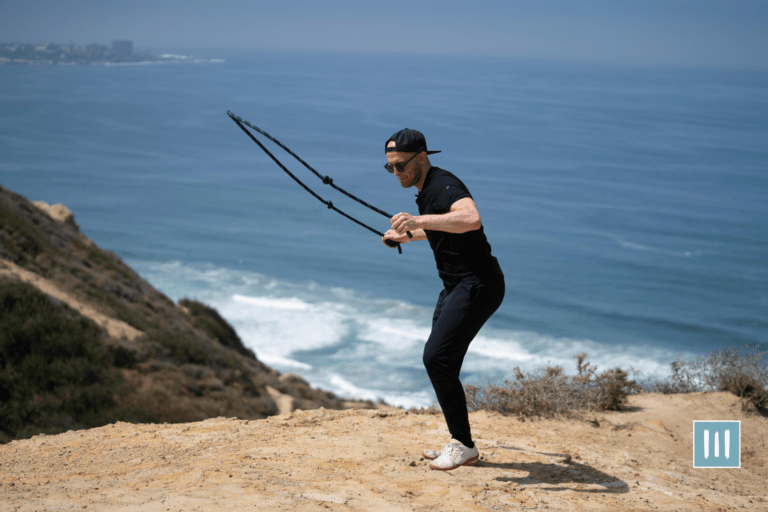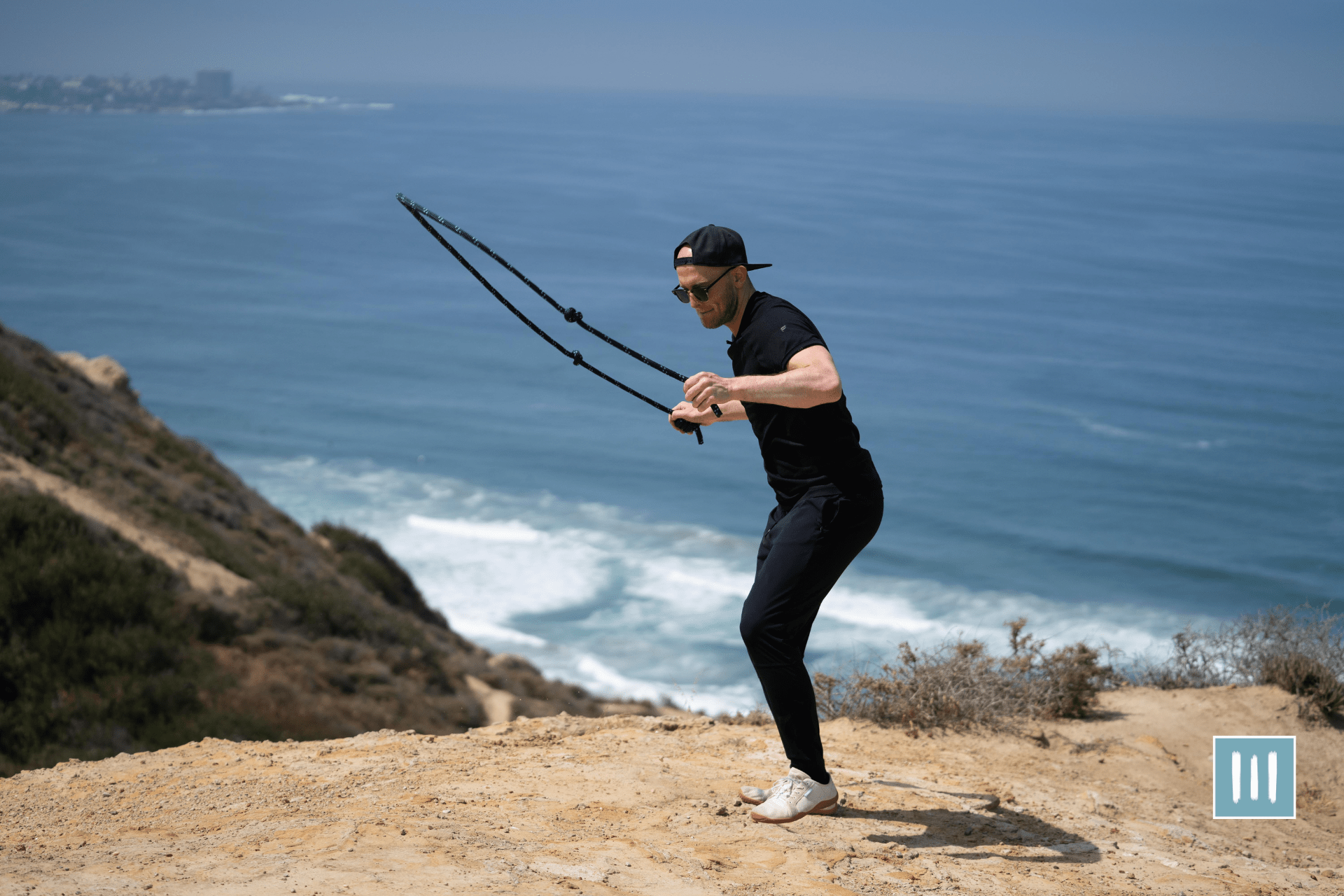If you have a subconscious desire to be fit, then rope flow training might be just the thing for you. This dynamic and challenging workout involves using a rope in a variety of movements and techniques to improve strength, flexibility, and coordination.
In this article, we will guide you on how to get the most out of your rope flow training, from choosing the right rope to incorporating it into your fitness routine.
To start your rope flow journey, it’s important to choose the right rope that suits your needs. Whether you prefer a lightweight speed rope for quick and intense workouts or a heavier-weighted rope for building strength, selecting the right rope will ensure that you are able to perform the moves effectively and safely.
Once you have your rope, it’s time to warm up and stretch your body to prepare for the intense workout ahead. Engage in a series of dynamic warm-up exercises that target the muscles you will be using during your rope flow training. Stretching exercises will help improve your flexibility and prevent any potential injuries.
Key Takeaways
- Rope flow training can improve strength, flexibility, and coordination.
- Choosing the right rope is important for effective and safe training.
- Warm-up and stretching exercises should be done before starting rope flow training.
- Consistency and practice are essential for mastering rope flow techniques.
Choosing the Right Rope
Finding the perfect rope can make all the difference in your training experience and ensure that you get the most out of your sessions.
Material
First, consider the material of the rope. You’ll want a rope that is durable and able to withstand the intensity of your workouts. Look for ropes made from high-quality materials such as nylon or PVC. These materials are not only long-lasting but also provide a smooth and consistent flow.
Length
Additionally, think about the length of the rope. A rope that is too long or too short can hinder your progress and make it difficult to perform certain moves. Aim for a rope that reaches just below your armpits when standing on the middle of it. This length will give you enough room to perform a variety of exercises while maintaining control.
Weight
Next, pay attention to the weight of the rope. A heavier rope will provide more resistance and help to build strength, while a lighter rope will allow for faster and more dynamic movements. Consider your fitness goals and preferences when choosing the weight of your rope. If you’re looking to increase your strength and power, opt for a heavier rope. On the other hand, if you prefer a more cardio-focused workout or want to improve your speed and agility, a lighter rope may be the better choice.
Handles
Lastly, don’t forget about the handles of the rope. Look for handles that are comfortable to grip and have a non-slip surface. This will ensure that you can maintain a secure hold on the rope even during the most intense movements.
Warm-Up and Stretching Exercises
Before diving into your rope flow training, have you considered incorporating warm-up and stretching exercises? These exercises are crucial in preparing your body for the intense movements and demands of rope flow. Not only do they help prevent injuries, but they also improve your flexibility, range of motion, and overall performance.
So, before you start swinging that rope, take a few minutes to warm up and stretch your muscles. Here are some warm-up and stretching exercises that you can incorporate into your routine:
- Jumping Jacks: Start with a set of jumping jacks to get your heart rate up and warm up your entire body.
- Arm Circles: Stand with your feet shoulder-width apart and extend your arms out to the sides. Make small circles with your arms, gradually increasing the size of the circles.
- Leg Swings: Stand next to a wall or a sturdy object for support. Swing one leg forward and backward, keeping your leg straight. Repeat on the other leg.
- Side Lunges: Stand with your feet wider than shoulder-width apart. Take a wide step to the side with your right foot, bending your right knee and keeping your left leg straight. Push off with your right foot to return to the starting position, then repeat on the left side.
Warming up and stretching before your rope flow training not only prepares your body physically but also helps you mentally focus on the task at hand.
So, don’t skip the warm-up and stretching exercises – they’re worth the extra few minutes!
Basic Rope Flow Techniques
Master the art of rope flow by learning basic techniques that will have you seamlessly transitioning from one move to the next. The key to understanding rope flow is to start with the basics and build a solid foundation.
Begin by learning the basic rope flow patterns, such as the alternating waves, the side-to-side waves, and the crisscross. These patterns will help you develop coordination, rhythm, and control over the rope.
As you become more comfortable with these patterns, you can start incorporating more complex moves, such as the double under, the crossovers, and the slams. Practice these moves slowly and focus on maintaining a smooth flow throughout your routine.
With time and dedication, you will be able to effortlessly transition from one move to the next, creating a mesmerizing display of rope flow proficiency.
To truly get the most out of your rope flow training, it’s important to put in the time and effort to practice regularly.
Set aside dedicated time each day to work on your technique and explore new moves. Challenge yourself to try different variations and combinations to keep your routine fresh and exciting.
Additionally, pay attention to your form and technique. Make sure you are using your entire body, from your core to your arms and legs, to generate the power and rhythm needed for fluid rope flow.
And don’t forget to have fun! Rope flow is not just about the physical benefits, but also about the joy and satisfaction of learning a new skill.
Embrace the process, enjoy the journey, and watch as your rope flow skills continue to improve with each practice session.
Advanced Rope Flow Moves
To truly level up your rope flow game, it’s time to take on some next-level moves. These advanced rope flow moves will not only challenge your skills, but also help you develop a greater sense of mastery over the rope. Here are a few moves to add to your repertoire:
- Double Unders with Crosses: This move takes the basic double under and adds a twist. As you jump, cross your arms in front of your body, making an X shape with the rope. This not only requires precise timing and coordination, but also adds a stylish flair to your rope flow.
- Crossovers: Crossovers are a great way to add complexity and creativity to your rope flow. As you jump, cross your arms in front of your body and then quickly uncross them, allowing the rope to pass under your feet. This move requires quick reflexes and a keen sense of timing, but once mastered, it adds a dynamic element to your routine.
- Side Swings: Side swings are all about control and finesse. Instead of jumping over the rope, you swing it from side to side, creating a wave-like motion. This move requires precise hand movements and a deep understanding of the rhythm of the rope. As you practice side swings, you’ll develop a greater sense of control over the rope, allowing you to flow effortlessly from one move to the next.
- Double Dutch: Double Dutch is a classic rope flow move that requires two ropes and a partner. The goal is to jump in and out of the ropes, while your partner swings them in a synchronized pattern. This move not only challenges your coordination and timing, but also adds a social element to your rope flow training.
Incorporating Rope Flow into Your Fitness Routine
Rope flow is a fantastic way to add variety and intensity to your workouts while also improving your coordination and cardiovascular fitness. By incorporating rope flow into your fitness routine, you can challenge yourself in new ways.
To help you get started, here is a sample workout plan that incorporates rope flow exercises:
| Exercise | Reps | Sets | Rest |
|---|---|---|---|
| Jump Rope | 50 | 3 | 30 seconds |
| Double-Unders | 30 | 3 | 30 seconds |
| Rope Slams | 20 | 3 | 30 seconds |
| Side-to-Side Waves | 15 | 3 | 30 seconds |
Start with a warm-up of 5-10 minutes of light cardio, such as jogging or cycling. Then, begin your rope flow workout with 3 sets of 50 jump rope repetitions, with 30 seconds of rest in between each set. This will get your heart rate up and warm up your muscles.
Next, move on to double-unders, which involve spinning the rope twice under your feet with each jump. Aim for 3 sets of 30 repetitions, with 30 seconds of rest in between each set. Double-unders require coordination and timing, so take your time to get the hang of the movement.
After that, incorporate rope slams into your workout. Stand with your feet shoulder-width apart and hold the rope handles with an overhand grip. Raise the rope overhead and then slam it down to the ground with force, using your whole body to generate power. Perform 3 sets of 20 rope slams, with 30 seconds of rest in between each set.
Finally, finish off your rope flow workout with side-to-side waves. Stand with your feet shoulder-width apart and hold the rope handles with an overhand grip. Move your arms in a side-to-side motion, creating waves in the rope. Aim for 3 sets of 15 repetitions, with 30 seconds of rest in between each set.
Incorporating rope flow exercises into your fitness routine will not only make your workouts more enjoyable but also help you improve your coordination and cardiovascular fitness.
Frequently Asked Questions
How long does it take to see results from rope flow training?
You can start seeing results from rope flow training in as little as a few weeks. With consistent practice, your strength, coordination, and overall fitness will improve, allowing you to master the art of rope flow.
Can rope flow training help with weight loss?
Yes, rope flow training can help with weight loss. By engaging multiple muscle groups and increasing your heart rate, it burns calories and promotes fat loss. Combine it with a balanced diet for optimal results.
Are there any alternatives to using a rope for rope flow training?
Yes, there are alternative tools for rope flow training. Resistance bands and battle ropes are popular options that can provide similar benefits. Experiment with different tools to find what works best for you. Keep pushing for mastery!
Can rope flow training improve cardiovascular health?
Want to improve your cardiovascular health? Rope flow training is the way to go! It will get your heart pumping and lungs working, helping you build endurance and improve overall fitness. So grab that rope and get moving!
Is it necessary to have prior fitness experience before starting rope flow training?
No, prior fitness experience is not necessary to start rope flow training. Just grab a rope and get started! Rope flow training is a great way to improve your cardiovascular health and build strength, regardless of your fitness level.

















